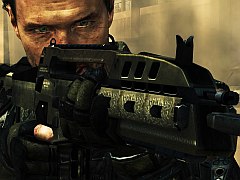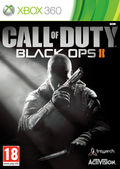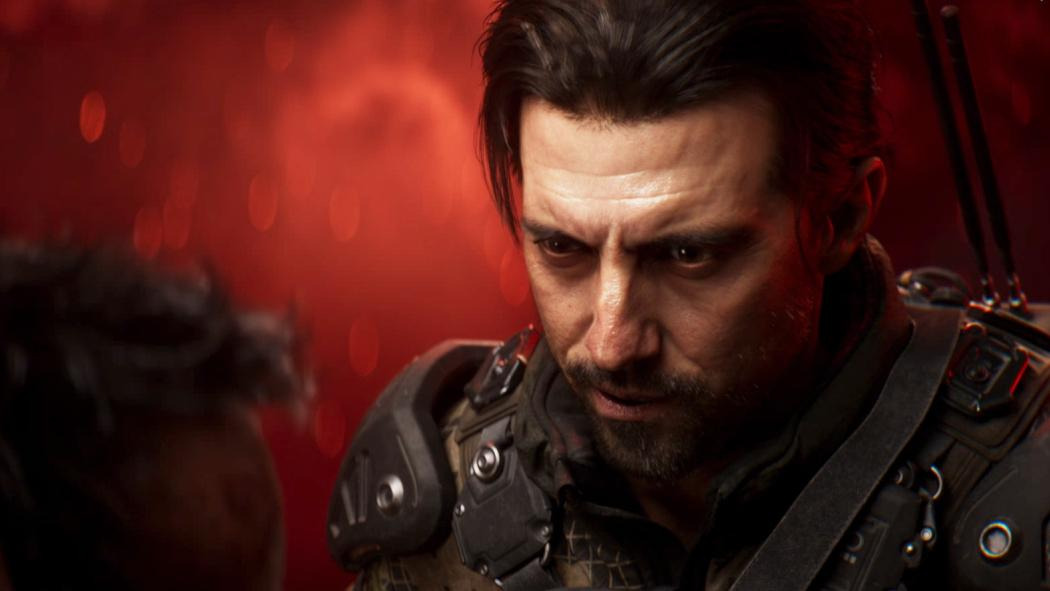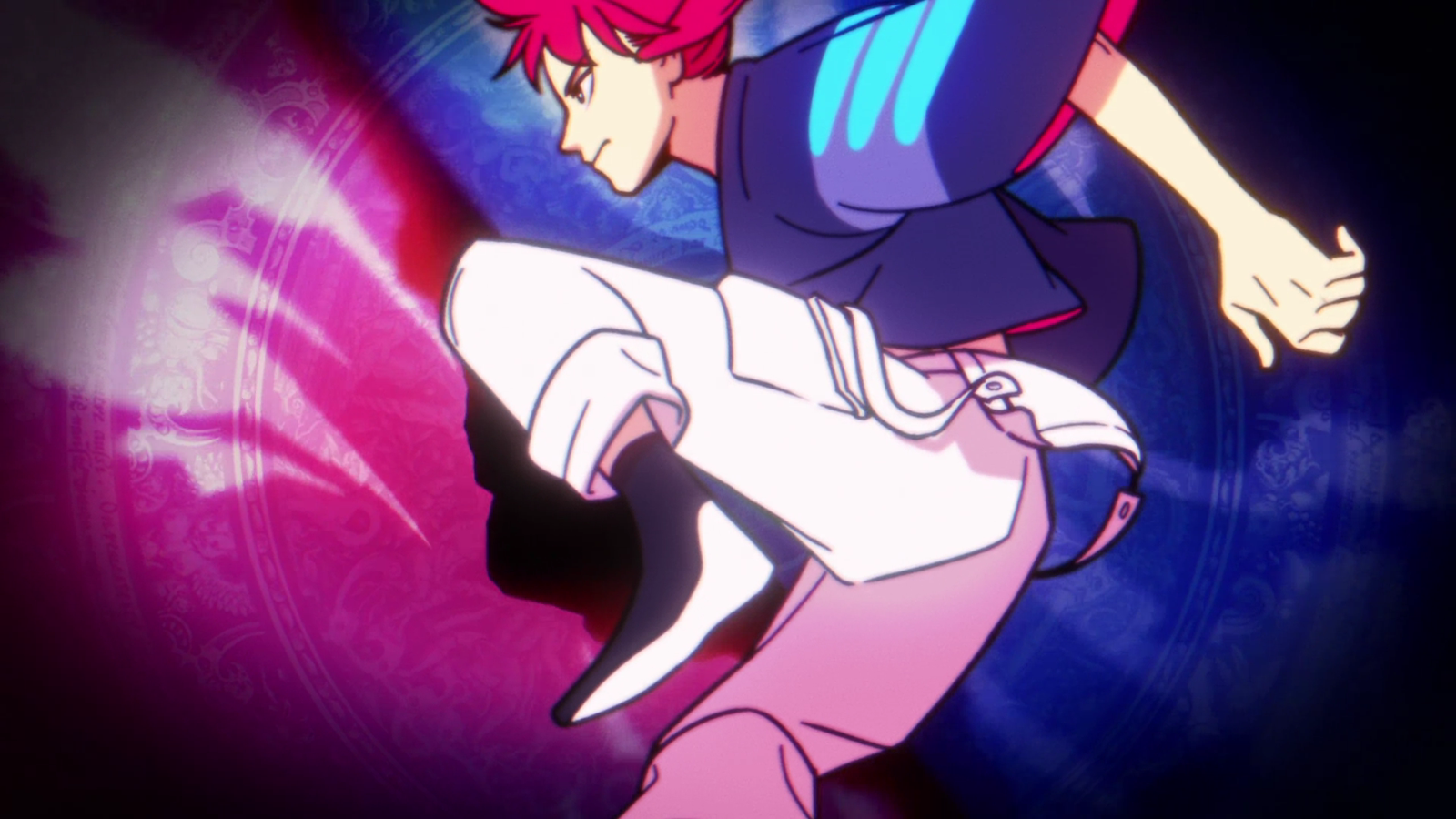You can trust VideoGamer. Our team of gaming experts spend hours testing and reviewing the latest games, to ensure you're reading the most comprehensive guide possible. Rest assured, all imagery and advice is unique and original. Check out how we test and review games here
While Modern Warfare 3 clearly had a big sweetheart crush on Michael Bay, Treyarch’s Black Ops II clearly wants nothing more than to pucker up and make out with Paul Verhoeven in a filthy nightclub. Much of this game, which feels like Treyarch doing its best to shrug off the modern shooter template it helped create, feels like a diligent check-list of eighties action movie tropes, gratuitous military porn and a mawkish 9/11 allegory. There’s even an obligatory action scene in a nightclub, though I’m fairly sure Treyarch will be proved wrong in its prediction that the dubstep fad will be able to ride it out until 2025.
The lumps of sci-fi gadgetry served up by this near-future setting are predominantly toys for multiplayer, of course, and it’s surprising to see just how much these gimmicky gizmos revitalise the rhythms of play without changing Call of Duty’s familiar online experience. Having the options to, say, fling electrical shock charges on the ground, see through walls (in my day that was called hacking) or call down a spinning robot drone really helps to add a new sheen to Call of Duty’s annual shopping catalogue of guns and gear in a game that was becoming little too stymied and regimental in its regular offerings.
There’s no chance of mistaking this new sheen for any noticeable innovation, however, which is something I said last year and will probably be repeated again in 2013. Call of Duty is now as familiar a part of November as Guy Fawkes Night or Thanksgiving, and Black Ops II feels like it’s singing to the series’ all-too recognisable tune.
Treyarch makes no real effort to change the emphasis on tight infantry skirmishes, and instead refocuses its experience to play up to its futuristic gimmicks and further emphasise Call of Duty’s twitch-based heritage. This isn’t really a big surprise when you remember how Call of Duty is making an obvious stab for the hardcore eSports market this year, incorporating a League Play option which unlocks all weaponry by default, removes the Care Package streak and even allows live streaming of games to YouTube. League Play offers six divisions which reset once a month, and players and clans can go up as well as down after an opening string of five matches determine initial placement.
Much of Black Ops II revolves around Treyarch’s 10-point loadout scheme, which allows players to deck their custom classes out with more variety than previous titles. Every item – weapons, attachments, grenades and perks – is given a singular point value, and wildcard options (which cost a point of their own) are included so players can have, say, a fourth perk. Don’t fancy a tactical grenade or secondary weapon? You can go for a third attachment or second grenade instead.
Black Ops II’s breadcrumb trail of unlocks, once the series’ signature piece but now relegated to part of the modern shooter framework, is slightly easier to digest than in Modern Warfare 3. Perks no longer affect weaponry; old favourites like Stopping Power, which used to provide a universal damage boost, have now been superseded by specific attachments, unlocked by levelling up the gun in question. It makes more sense that you boost your accuracy by clipping on a laser sight (or, if you want to be fancy, the new millimetre scanner and target finder) rather than activating a weapon-specific perk, but essentially this is more rearrangement than refinement. Still, all things considered, I think Black Ops II has better Feng Shui.
Refinement is clearly Treyarch’s goal, so it’s no surprise to see the complicated business of Modern Warfare 3’s trio of Strike Packages trimmed into a simpler Scorestreaks system. Here Black Ops II doles out points when players accomplish kills and other assorted in-game tasks, such as capturing points in Domination or picking up tags in Kill Confirmed, and dishes out your usual streak rewards, with Black Ops’ RC-XD and attack dogs making their reappearance alongside quadrotors and whizzy futuristic attack drones. Much of what you can accomplish in the game is rewarded with points; there’s even a steady numerical trickle when you’ve got an active UAV hovering around. For the first time in Call of Duty, actually defending the objective can rack up a serious amount of points.
But, as is it with any game played regularly by an active community, some of the smallest changes will have the biggest impact. Treyarch claims it has developed an intelligent spawning system that will actively adapt and develop over time, for instance – which, as anyone who’s played on Modern Warfare 3’s Hardhat map will tell you, could have a significant effect on the play-by-play rhythm of the game. The developer has also softened its previously hostile stance on snipers and included quickscoping, modifying player hitboxes to make such feats a real skillshot. In general, Black Ops II’s weapons have very little recoil compared to the rest of the genre, and a shotgun with a long barrel and stock is an ADS beast. Only time will tell how Black Ops II’s players will respond to these changes, but those that have become frustrated with the series’ proliferation of shotguns will probably be ready to call it a day.
And as much as I enjoyed the original Black Ops, it was a game where I decked out the MP5K and never felt the need to use another weapon ever again. Black Ops II is still very much a game where SMG’s excel – I’m a fan of the Vector K10, personally – but early impressions suggest far more scope for versatility and customisation. I do like the punchy feel and the meaty, loud and easily detectable sounds of all the weaponry, and mixed with Black Ops II’s slightly slower movement speed this makes good positioning vital.
It’s a shame after last year’s excellent Kill Confirmed that new modes Multi-Team Deathmatch and Hardpoint don’t do much to detract from TDM, Domination and Search & Destroy. To many, however, the single most important part of Black Ops II will be its 14 new maps. These are traditional Treyarch designs, most bordering on mid-to-large sizes, and have a slightly more regimented structure compared to Modern Warfare 3’s figure-of-eight murdergasms. I think a few of these offerings (such as Cargo and Raid) will even be remembered as fondly as Grid and Summit down the line.
As always there are more than a few areas that prompt feelings of deja vu: bits of Turbine recall Modern Warfare 2’s Afghan so heavily that I was half-expecting to be immediately rushed by akimbo 1887’s, and Hijacked comes across as an opulent version of Call of Duty 4’s Wetwork. As a whole, though, Black Ops II revels in choke points, killzones and general carnage, and provides a frenetic counterpoint from the epic sprawl of Battlefield 3 or the tactical precision of Halo 4.
There’s also a single-player campaign, of course. And, well, that doesn’t fare nearly as well. That the multiplayer often feels so punchy and compelling makes the single-player feel even more tired by comparison, as Treyarch tries to juggle its concurrent 1980s and 2025 storylines with an ensemble cast so bloated I’ve already forgotten most of it. One of the guys is voiced by the Candyman – that’s about all I can tell you.
As Woods, Mason and Mason Jr, you high-tail around an 11-level campaign taking in the sights of China, Central America, Asia and the Caribbean in a bid to both further the convoluted-but-enjoyable cheese of the original Black Ops, alongside a futuristic plot about a slighted Central American terrorist enacting a plot to destroy the G20 countries. Much of it feels like six hours of stitched-together waffle and padding, and the series’ signature trait of generating spectacle doesn’t work when everything feels so unspectacular. For the first time in a Call of Duty game, I was bored by what was going on around me.
Perhaps to compensate, at times it really tries to be offensive. There are at least two incredibly gratuitous shots of people being burned alive in the opening fifteen minutes, and the campaign merrily skips towards Cuban child soldiers and a shipping container full of decomposing bodies before the end of your first hour. Such moments are an awkward, jarring contrast between the endearing silliness of the campaign’s 80s-inspired best bits, which variously find you firing rockets at helicopters from a horse and punching people with an electric glove that causes them to vomit to death. When Black Ops II is hamming up its 80s inspirations it’s actually a fairly entertaining display of action movie fluff, but such amusement is thoroughly quashed when Treyarch attempts to layer its exploitative modern gratuities on top. It’s a campaign that can never decide whether it wants to be kitsch or harrowing, so in the end it accomplishes neither. And one particular level where you’re running around as a madman with a machete is really just incomprehensible bollocks.
Every now and then you’ll also be chucked into a Strike Force mission, which attempts to weave a layer of real-time strategy on top of the familiar shooting by allowing you to zoom out and reposition a group of squads as you attempt to attack or defend an objective. It’s a nice idea, but the sad reality of these half-baked missions is that they feel like they were added in solely to appease whoever writes the game’s box blurb.
Whereas the traditional elements of a Call of Duty campaign weave an elaborate display of smoke and mirrors to guide you down its linear corridors, the five Strike Force missions shine a whopping great spotlight on the engine’s greatest weaknesses. These hollow constructions do not allow for thoughtful organic play, and any high-concept idea of battlefield strategy collapses with AI that is routinely incapable of doing anything productive. That the game gives you limited attempts at accomplishing these fussy, fiddly missions is even more counter-productive, ensuring that you’re never truly able to try out any new ideas or properly experiment with these mechanics. Not that you’d ever want to.
With the campaign as it is, the idea that you’d want to go back and replay it multiple times is laughable. In the end you’re just chasing another villain in a desperate bid to quash a terrorist atrocity, but now you’ve got customisable loadouts (heavily restricted by completion and challenges) and the option to kill or save certain characters that marginally affects the ending cinematic.
You’re never more than an actor in Treyarch’s neoconservative wet dream of a campaign, its muddled narrative attempting – but failing – to address contemporary issues of class and wealth. In the end, however, Black Ops II ends up as staunch defender of capitalism, military might and free trade. As a narrative it has absolutely no idea what it wants to accomplish.
Rounding off the experience is Zombies, the cheap and cheerful bonus mode that has you exploring B-movie settings while fending off increasingly difficult waves of zombies. Treyarch has split its one campaign, Green Run, into a series of five maps. These can all be linked together by the TranZit mode which gives you robot zombie bus driver, which plays up to the sense of exploration and discovery that was conjured so successfully by Black Ops’ later Zombies maps. Each one of these areas – bus stop, diner, farm, power plant, and city – can be played individually in Survival mode, or in a 4v4 survival mode called Grief, which quickly falls flat. There’s a lot on offer with Green Run, but it would have been nice to have had a second campaign included before the inevitable barrage of DLC begins.
How, then, do you rate a game like Call of Duty: Black Ops II? The weak campaign is a massive disappointment, and the bizarre and disjointed execution of its signature set-piece moments are failed even further by the woeful Strike Force missions and wonky, wishy-washy attempts at player interactivity. It is, to put it simply, bad. Yet the multiplayer side of the game has successfully managed to rekindle my love for Call of Duty’s close-range playgrounds, and Treyarch’s decision to mix an excellent selection of maps with a new bag of futuristic toys reinvigorates an experience that I was starting to tire of. For the first time since Modern Warfare 2 I am plotting out loadouts and map strategies on the train to work.
A divisive game, then, and a thorny scoring situation I’ve not found myself in since last year’s Battlefield 3. In the end, though, I prioritise the giddy highs of Black Ops II’s exhilarating multiplayer over the disappointment of its poor and brief campaign. Be very careful if you don’t.
Version Tested: Xbox 360
The latest Modern Warfare game is fast approaching – and there’s a way you can play it early. You can check out the MW3 beta start time right here.
This review was written after spending 16 hours with the game, with six hours spent playing the campaign and the rest in multiplayer over a local network. The game was played at a two-day review event hosted by Activision in early November, and also with retail Xbox 360 code obtained independently by VideoGamer.com.
Call of Duty: Black Ops 2
- Platform(s): PC, PlayStation 3, Wii U, Xbox 360
- Genre(s): Action, First Person, Shooter







